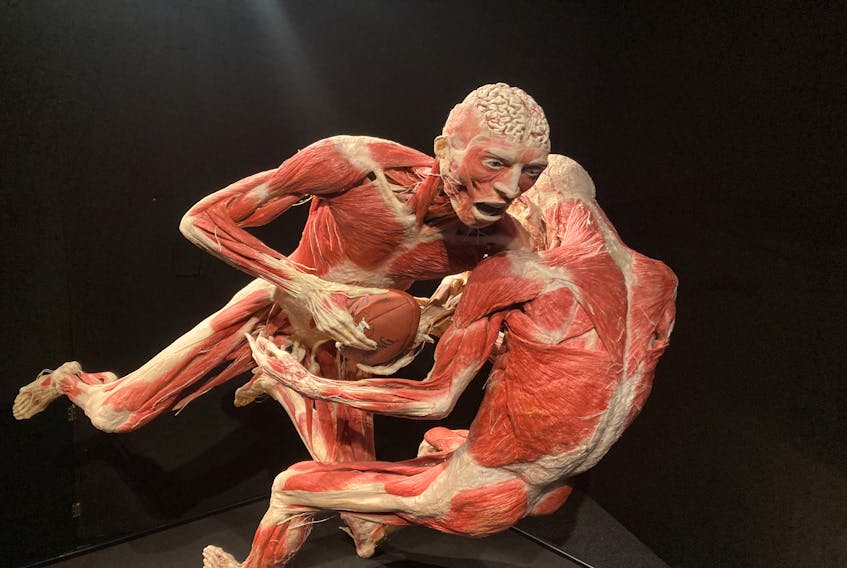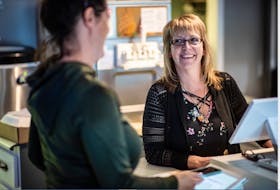The new Body Worlds Vital exhibition at the Nova Scotia Museum of Natural History has the ability to change lives.
“I got a letter from a woman who had come to see the exhibit and saw the smoker’s lung and quit smoking on the spot,” says Jeffrey Gray, the manager at the Museum of Natural History. “You don’t get many opportunities to feel that you’ve impacted people’s lives, but this exhibit allows for that level of connection.”
The remarkable exhibition, on display until April 30, goes beyond models and images to educate visitors about anatomy, physiology and health through displays of whole bodies, individual organs and transparent body slices.
People who visit get the opportunity to look at how organs function under the skin, see the effects of common diseases, alcohol consumption and tobacco use on the human body, and explore the mechanics of artificial body parts.
“The 6,000 square foot exhibit features real human bodies and shows how humans can live a healthier lifestyle,” says Gray. “It is a chance to educate people about how your body works, how all the organs and parts of your body fit together, and to understand that the life choices you make really do impact how your body works.”
Bodies in the exhibition are donated and preserved through a ground-breaking process called plastination. This process halts decomposition and allows bodies to be used for educational purposes.
“Plastination is basically removing all of the moisture from a body and replacing it with a liquid plastic that maintains how muscles move,” says Gray. “This makes it possible to pose the bodies in certain ways and allows them to show bodies in a way you wouldn’t normally expect to see them.”
Through plastination, visitors can view how bodies respond internally to everyday movements and activities.
The bodies are specially placed in different poses to highlight certain anatomical features. For instance, athletic poses draw attention to the muscle system.

“It’s hard to describe the impact of seeing a real body versus a model or an image. I think that it’s something you have to experience,” says Gray. “It takes visitors a bit of time to fully realize what they are looking at, but once they do, it is extremely impactful.”
The exhibit gives people an authentic look at how our bodies work and interact with the world around us, he says.
The nature of the exhibition allows everyone, from young children to adults, to enjoy the experience of exploring the power and uniqueness of the human body.
“I think the exhibit works for everyone,” says Gray. “We all have a body, and anything that can inspire us to lead a healthier life and take care of that body, the only one we’re given, is an important aspect of this show.”
This is the second time the exhibit has been in Atlantic Canada, allowing people a rare opportunity to see a world-class collection that over 42 million people have seen.
“In 2018, we had a smaller exhibit, so having the full exhibit is really exciting,” says Gray. “But what makes this exhibit so special is its very real impact on people and their relationship to their body.”
The exhibition – which has been on display at the museum since Jan. 27 – has received positive reactions from visitors.
“People seem very thankful that we have the exhibit, especially a larger exhibit that people would expect to see in places like Toronto,” explains Gray. “They are very appreciative of the opportunity to see and learn about the human body.”
Visitors can stay for as long as they like within the opening hours of the museum, but it is recommended that participants allow around 45 minutes to an hour to fully explore the exhibit.
“This exhibition is so special, and we are so happy that we can share and connect with people that take part in this exhibit,” says Gray.
For more information about the exhibit, museum hours and admissions, please visit https://naturalhistory.novascotia.ca/ or find them on social media.









